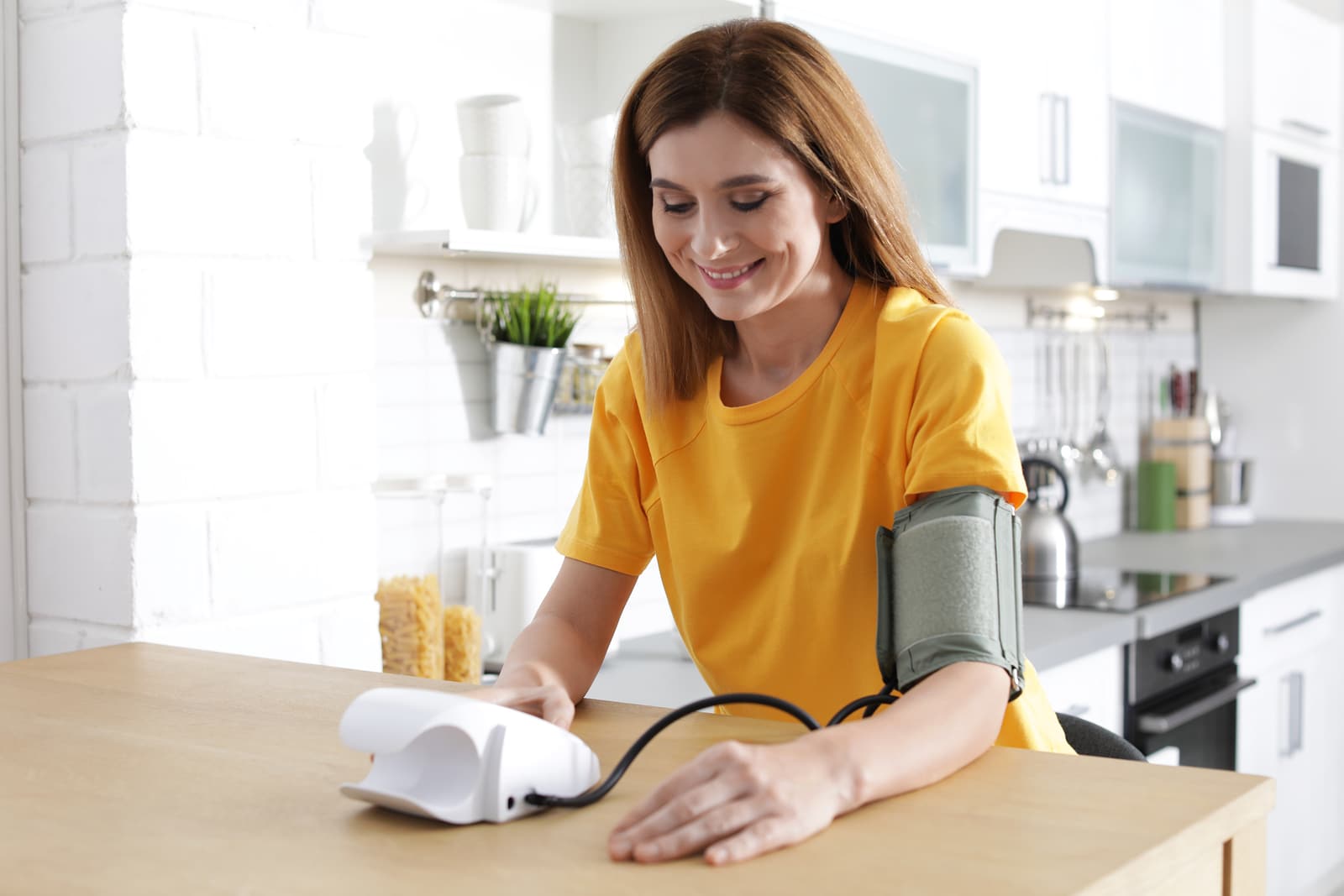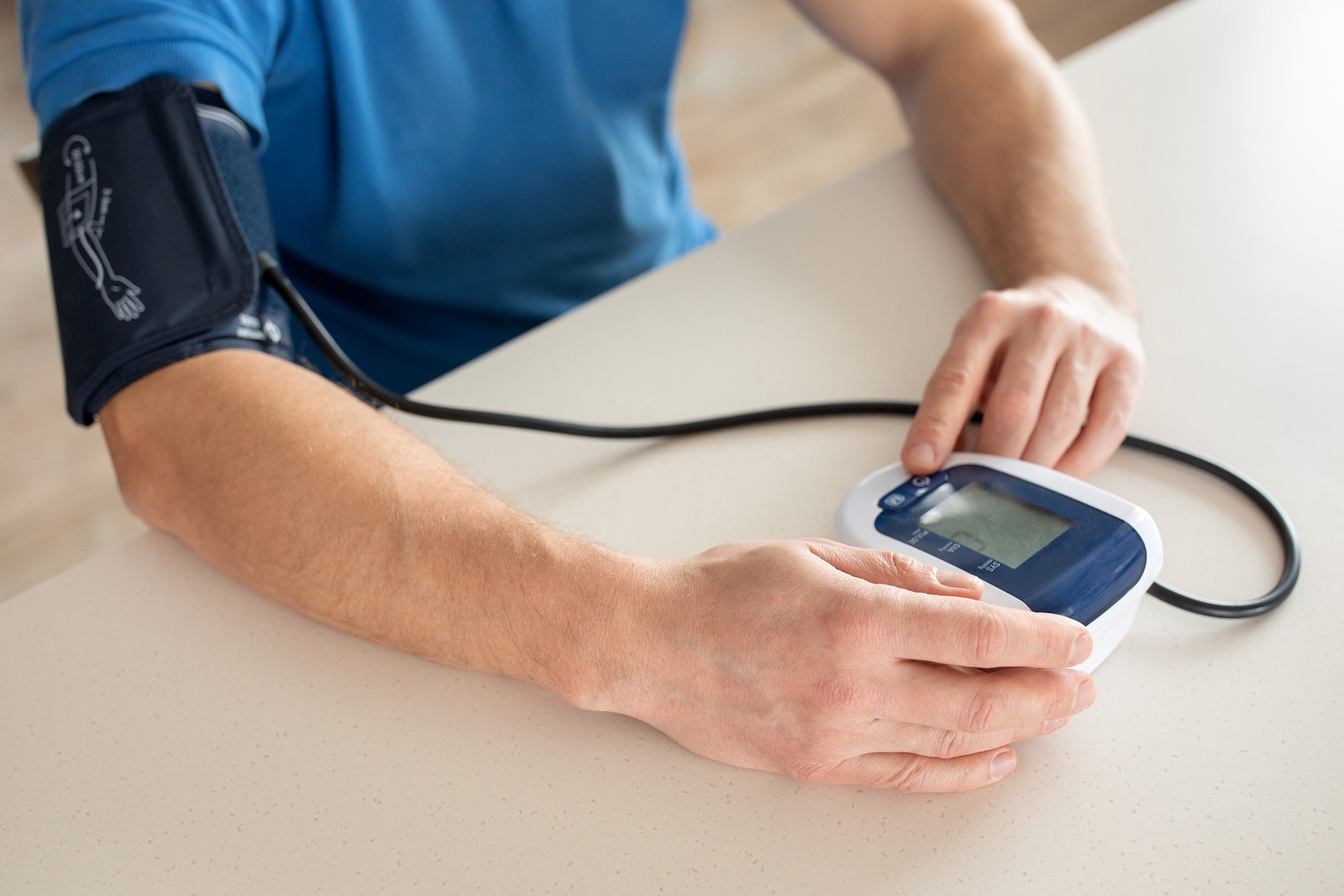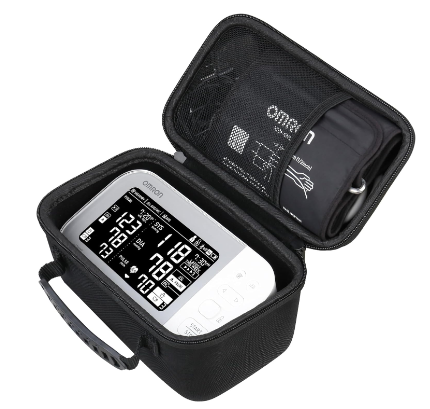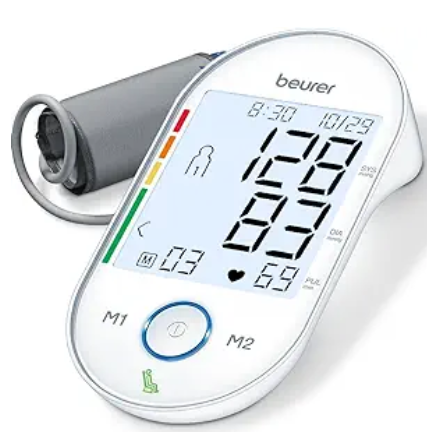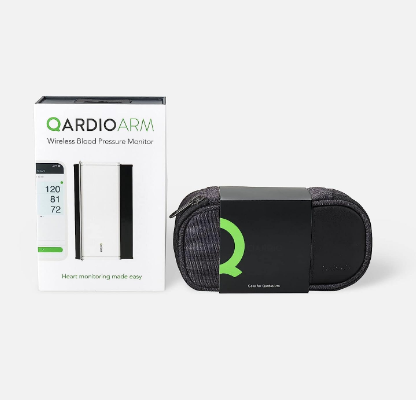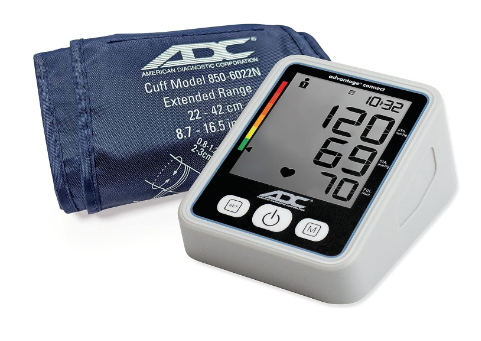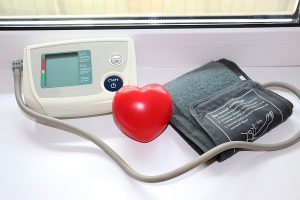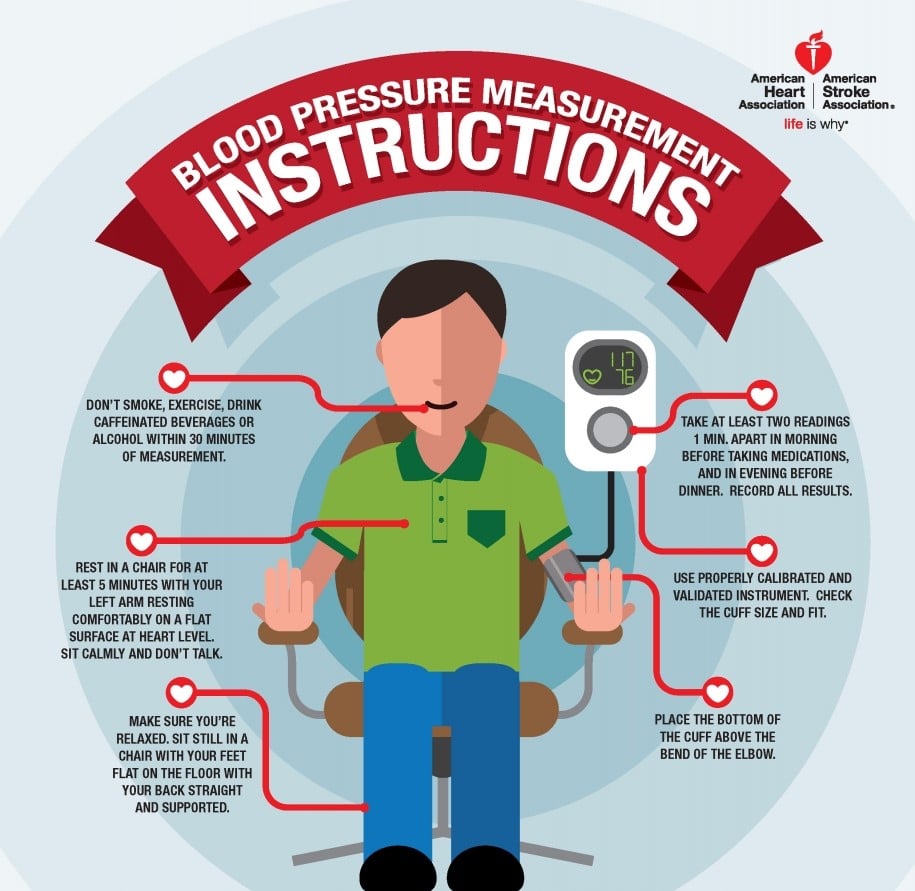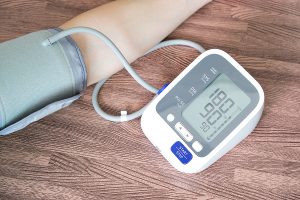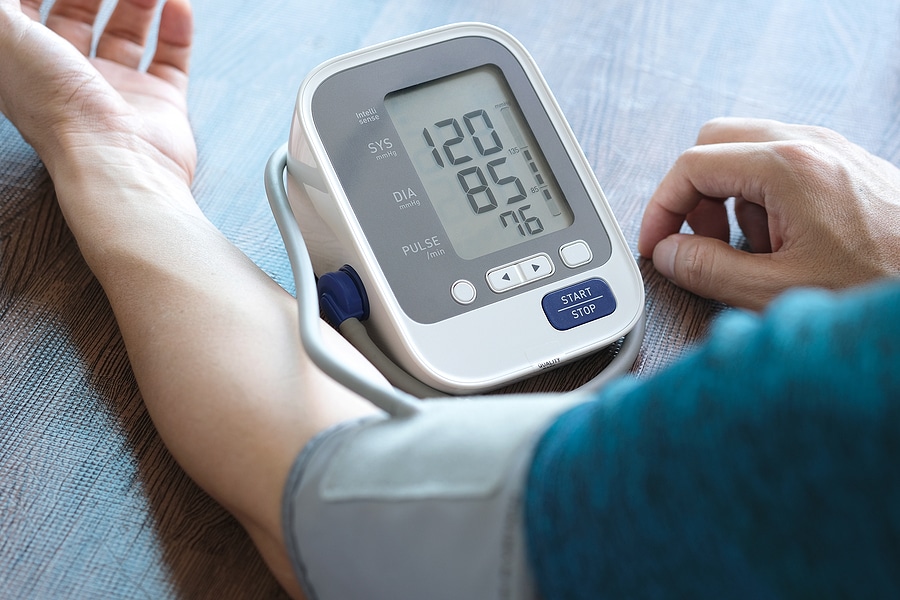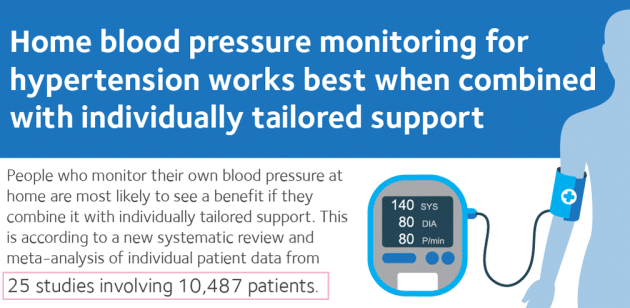Blood Pressure Monitors
Your heart is the engine that powers your circulatory system. It works ceaselessly on your behalf to move your blood to your muscles, organs, and all the other parts of your body that require constant energy and oxygen. The force created by blood movement throughout your body is known as blood pressure. The moment after your heart beats, your blood pressure goes up. When your heart is relaxed, your blood pressure falls. That’s why you get two different numbers each time you measure blood pressure.
Most people who monitor their blood pressure at home are concerned about hypertension or high blood pressure. Hypertension has no immediate severe effects but can damage you over a long period. According to the Mayo Clinic, half of people who do nothing about their high blood pressure die of ischemic heart disease, and another third end up dying from strokes. High blood pressure has many causes, ranging from obesity to family history. Fortunately, there are many ways to control high blood pressure once you’ve identified the problem.
Blood pressure is an essential indicator of overall health. High blood pressure, or hypertension, can lead to serious health problems like heart disease, stroke, and kidney failure. Therefore, it is crucial to monitor blood pressure levels to keep them in check regularly. Fortunately, with the advancement of technology, blood pressure monitors are now easily accessible for home use. In this article, we will introduce the best blood pressure monitors available.
Accuracy is the most crucial factor when choosing a blood pressure monitor. The American Heart Association recommends using monitors validated by independent organizations such as the Association for the Advancement of Medical Instrumentation or the British Hypertension Society. Also, ease of use, comfort, and affordability are important factors. With so many options available, it can be overwhelming to choose the right one. This article will provide a comprehensive review of the best blood pressure monitors, making it easier for readers to decide.
Understanding Blood Pressure Monitors
Blood pressure monitors are medical devices that measure the force of blood against the walls of the arteries. They are commonly used to diagnose hypertension or high blood pressure, which can lead to serious health problems such as heart disease and stroke. There are two types of blood pressure monitors: manual and automatic. Manual monitors require a stethoscope and a blood pressure cuff, while automatic monitors use sensors to detect blood pressure readings.
Medical professionals often use manual monitors, while automatic monitors are more commonly used at home. Automatic monitors are easier to use but may only sometimes provide accurate readings. It’s essential to follow the manufacturer’s instructions carefully when using a blood pressure monitor. Blood pressure monitors come in different sizes and styles and may include additional features such as memory storage and the ability to connect to a smartphone app. Choosing a comfortable and easy-to-use monitor is essential, encouraging regular blood pressure monitoring.

When selecting a blood pressure monitor, it’s essential to consider factors such as accuracy, ease of use, and cost. It’s also necessary to consult with a healthcare professional to ensure the monitor is appropriate for individual needs and medical conditions. Blood pressure monitors are an essential tool for monitoring and managing blood pressure. Regular monitoring can help individuals maintain healthy blood pressure and reduce the risk of severe health problems.
Types of Blood Pressure Monitors
Automatic Monitors
Automatic monitors are the most common type of blood pressure monitor. They are easy to use and require minimal training. Mechanical or digital monitors use an inflatable cuff wrapped around the upper arm. The cuff is then inflated and deflated automatically, and the monitor displays the blood pressure reading on a digital screen.
Manual Monitors
Manual monitors are less common than automatic monitors and require more training. They are also known as aneroid monitors and use a manually inflated cuff using a bulb. A stethoscope is then used to listen to the blood flow in the artery, and the pressure is read on a gauge. Manual monitors are more accurate than automatic monitors but require more skill.
Ambulatory Monitors
Ambulatory monitors are used for people who need to monitor their blood pressure over an extended period, such as 24 hours. They are also known as portable monitors and are worn on the wrist or waist. Ambulatory monitors take readings automatically regularly throughout the day and night, providing a more accurate picture of blood pressure changes over time.
Wrist Monitors
Wrist monitors are a type of automatic monitor that is worn on the wrist. They are smaller and more portable than other types of monitors, making them a good choice for people who need to monitor their blood pressure on the go. However, wrist monitors are less accurate than other types of monitors and can be affected by the position of the wrist.
In summary, there are four main types of blood pressure monitors: automatic, manual, ambulatory, and wrist monitors. Each class has advantages and disadvantages; the monitor choice will depend on the individual’s needs and preferences.
Top 5 Blood Pressure Monitors in the Market
-
The Omron Platinum Blood Pressure Monitor
The Omron Platinum Blood Pressure Monitor is a highly advanced and accurate device designed to help you monitor your blood pressure at home. This device has advanced features that make it easy to use and highly effective in tracking blood pressure readings. One of the critical features of the Omron Platinum Blood Pressure Monitor is its accuracy. This device uses advanced technology to ensure your readings are highly accurate and reliable. It is equipped with a multi-user mode that allows you to store up to 200 readings for two users, making tracking your progress over time easy.
The Omron Platinum Blood Pressure Monitor is also straightforward to use. It features a large, easy-to-read display that shows your blood pressure readings, as well as your heart rate and any irregular heartbeats. It also has a one-touch button that makes it easy to start and stop the device and a comfortable cuff that fits most adult arms. Another great feature of the Omron Platinum Blood Pressure Monitor is its connectivity. This Bluetooth-enabled device lets you easily connect it to your smartphone or tablet and track your readings over time. It also comes with an Omron Connect app that allows you to store and share your lessons with your doctor or healthcare provider.
Overall, the Omron Platinum Blood Pressure Monitor is a highly advanced and accurate device that is easy to use and highly effective in tracking blood pressure readings. Whether you monitor your blood pressure for medical reasons or want to keep track of your health, this device is an excellent choice.
-
The Beurer BM55 Blood Pressure Monitor
The Beurer BM55 Blood Pressure Monitor is a high-quality device designed to help you keep track of your blood pressure readings accurately and efficiently. This monitor is designed with advanced features that make it easy to use and provide accurate results every time you use it. One of the critical features of the Beurer BM55 Blood Pressure Monitor is its large, easy-to-read display. This display shows your blood pressure readings, pulse rate, and other important information in large, precise numbers, making it easy to read even with poor eyesight.
The monitor also features a built-in memory function that can store up to 2 x 60 readings, allowing you to keep track of your blood pressure over time. This can be especially useful if you are trying to monitor your blood pressure for medical reasons or if you are trying to make lifestyle changes to improve your overall health. Another great feature of the Beurer BM55 Blood Pressure Monitor is its ability to detect irregular heartbeats. This can be a sign of underlying heart problems, so being able to see them early can be crucial for your health. The monitor will alert you if it detects an irregular heartbeat so you can seek medical attention if necessary.
Overall, the Beurer BM55 Blood Pressure Monitor is a reliable and accurate device that can help you keep track of your blood pressure readings quickly and efficiently. Its advanced features, large display, and memory function make it an excellent choice for anyone who needs to monitor their blood pressure regularly.
-
The QardioArm Wireless Blood Pressure Monitor
The QardioArm Wireless Blood Pressure Monitor is a compact and easy-to-use device for measuring blood pressure that can be used at home or on the go. It is designed with the latest technology to provide accurate readings and help users keep track of their blood pressure levels. The small and portable device makes it easy to carry around and use whenever needed. It is also wireless and can be connected to a smartphone or tablet via Bluetooth, allowing users to track their readings and monitor their progress over time.
The QardioArm Wireless Blood Pressure Monitor has a large, easy-to-read display showing the user’s blood pressure readings and heart rate. It also has a unique feature that allows users to set reminders to take their blood pressure readings at specific times throughout the day. The device is also very user-friendly, with a simple one-button operation that makes it easy to use even for those who need to be tech-savvy. It is also designed to be comfortable, with a soft, adjustable cuff that fits most arm sizes.
Overall, the QardioArm Wireless Blood Pressure Monitor is reliable and convenient for measuring blood pressure. It is perfect for anyone who wants to keep track of their health at home or on the go. It is an excellent investment for those who want to control their health and ensure their blood pressure is within a healthy range.
-
The Welch Allyn Home Blood Pressure Monitor
The Welch Allyn Home Blood Pressure Monitor is a medical device that provides accurate and reliable blood pressure readings for home use. It is a fully automated device that measures blood pressure and pulse rate using oscillometric technology, which detects the vibrations caused by blood flow through the arteries. The device features a large, easy-to-read display that shows systolic and diastolic blood pressure readings and pulse rates. It also has a memory function that can store up to 100 tasks, allowing users to track their blood pressure over time.
The Welch Allyn Home Blood Pressure Monitor is designed to be user-friendly, with a simple one-button operation and an adjustable cuff that fits most adult arm sizes. The device also has an irregular heartbeat detector, which alerts users if it detects any irregularities in their heart rate. In addition to its accuracy and ease of use, the Welch Allyn Home Blood Pressure Monitor is designed with the user’s comfort. The cuff is made from soft, comfortable material that is gentle on the skin, and the device operates quietly, making it ideal for use in a quiet home environment.
Overall, the Welch Allyn Home Blood Pressure Monitor is a reliable and convenient device for monitoring blood pressure at home. Its accuracy, ease of use, and comfort make it an excellent choice for anyone who needs to monitor their blood pressure regularly.
-
The A&D Medical Deluxe Connected Blood Pressure Monitor
The A&D Medical Deluxe Connected Blood Pressure Monitor is a state-of-the-art device that provides accurate and reliable blood pressure readings. This device is equipped with Bluetooth connectivity, allowing you to easily connect it to your smartphone or tablet and track your blood pressure readings over time. The monitor features a large, easy-to-read display showing your systolic and diastolic blood pressure readings and pulse rate. It also has a built-in memory that can store up to 200 lessons, so you can easily track your progress over time.
One of the critical features of this blood pressure monitor is its ability to connect to the A&D Connect app. This app allows you to track and monitor your blood pressure readings easily and set reminders to take your lessons at specific times. You can also share your tasks with your doctor or healthcare provider, making managing your blood pressure and overall health easier. The A&D Medical Deluxe Connected Blood Pressure Monitor is also designed with user comfort in mind. The device features a comfortable and adjustable cuff that fits most arm sizes, and it is easy to use with just the touch of a button.
Overall, the A&D Medical Deluxe Connected Blood Pressure Monitor is an excellent choice for anyone looking to monitor their blood pressure at home. With its advanced features, easy-to-use design, and reliable accuracy, this device is an excellent investment in your health and well-being.
Common Additional Features
Blood pressure monitors have come a long way from the traditional manual sphygmomanometers. Today, many additional features are available on blood pressure monitors that make them more convenient and user-friendly. Here are some standard other features found on blood pressure monitors:
- Memory Function: Many blood pressure monitors have a memory function that stores previous readings. This feature lets you track your blood pressure and identify any changes or trends.
- Multiple User Profiles: Some blood pressure monitors allow you to create multiple user profiles. This feature is helpful for households with numerous people who need blood pressure monitoring. Each user can have their profile with their readings stored separately.
- Bluetooth Connectivity: Some blood pressure monitors have Bluetooth connectivity that allows you to connect the monitor to your smartphone or tablet. This feature makes it easy to track your blood pressure readings over time and share them with your doctor.
- Irregular Heartbeat Detection: Some blood pressure monitors have a rare heartbeat detection feature. This feature alerts you if your heartbeat is unstable, which could indicate an underlying health condition.
- Hypertension Indicator: Some blood pressure monitors have a hypertension indicator that alerts you if your blood pressure is higher than usual. This feature is helpful for people with high blood pressure or at risk of developing it.
- Averaging Function: Some blood pressure monitors have an averaging function that calculates the average of multiple readings. This feature provides a more accurate picture of your blood pressure over time.
- Large Display: Some blood pressure monitors have a large display that makes reading your blood pressure readings easy. This feature is helpful for people who have trouble reading small text.
- Voice Command: Some blood pressure monitors have a voice command feature that allows you to control the device with your voice. This feature is helpful for people with difficulty using buttons or touch screens.
- Portability: Some blood pressure monitors are designed to be portable, making them easy to use on the go. These monitors are compact and lightweight; some even come with carrying cases.
Blood pressure monitors have many additional features that make them more convenient and user-friendly. Memory function, multiple user profiles, Bluetooth connectivity, irregular heartbeat detection, hypertension indicator, averaging function, large display, voice command, and portability are some standard additional features found on blood pressure monitors. When choosing a blood pressure monitor, consider which features are most important to you and your healthcare needs.
Factors to Consider When Buying a Blood Pressure Monitor
When purchasing a blood pressure monitor, there are several factors to consider. These factors include accuracy, ease of use, cuff size, price, and additional features.
- Accuracy – Accuracy is one of the most important factors when buying a blood pressure monitor. It is essential to ensure that your monitor is accurate and reliable. An excellent way to check for accuracy is to compare the readings from the monitor to those taken by a healthcare professional.
- Ease of Use – Another essential factor to consider is ease of use. A blood pressure monitor should be easy to use and understand. Look for a monitor with a large display screen and clear instructions. Some monitors also have voice prompts to guide you through the process.
- Cuff Size – Cuff size is also an important consideration. Choosing a cuff that fits appropriately is essential to ensure accurate readings. Most monitors come with a standard cuff size, but if you have a larger or smaller arm, you may need to purchase a separate cuff.
- Price – Price is another factor to consider when buying a blood pressure monitor. There are many different models available at a range of price points. While choosing a monitor that fits your budget is crucial, ensuring that it meets your accuracy and ease of use needs is also essential.
In summary, when buying a blood pressure monitor, you must consider factors such as accuracy, ease of use, cuff size, price, and additional features to ensure you choose a monitor that meets your needs.
How to Use a Blood Pressure Monitor
Using a blood pressure monitor at home can be a great way to keep track of your blood pressure readings. Here are some steps to follow when using a blood pressure monitor:
- Sit comfortably with your feet flat on the floor and your back straight. Rest your arm on a table or armrest with your palm facing up.
- Wrap the cuff around your upper arm, ensuring it is snug but tight. The bottom of the cuff should be about an inch above your elbow.
- Turn on the monitor and follow the instructions to start the reading. Some monitors may require pressing a button to start the task, while others may start automatically.
- Remain still and quiet while the monitor takes your reading. Avoid talking or moving your arm during the lesson.
- Once the reading is complete, record the numbers displayed on the monitor. This may include your systolic blood pressure (the top number) and diastolic blood pressure (the bottom number).
- Repeat the process twice, waiting a few minutes between each reading. Take the average of the three tasks to get a more accurate result.
It’s essential to follow the instructions that come with your specific blood pressure monitor, as some monitors may have different steps or requirements. Additionally, taking your readings simultaneously each day is a good idea, and avoid eating, drinking, or exercising for at least 30 minutes before taking a lesson.
Maintaining Your Blood Pressure Monitor
To ensure that your blood pressure monitor continues to provide accurate readings, it is crucial to maintain it properly. Here are a few tips to help you keep your device in good condition:
- Clean the Cuff Regularly – Your blood pressure monitor cuff can accumulate dirt, oils, and other debris over time. To prevent contamination and ensure accurate readings, it is essential to clean the cuff regularly. You can use a mild soap and water solution or a disinfectant wipe to clean the cuff. Follow the manufacturer’s instructions for cleaning and disinfecting your device.
- Check the Batteries – Most blood pressure monitors power the device. It is essential to check the batteries regularly to ensure they work correctly. The device may not function properly or provide inaccurate readings if the batteries are low or dead. Be sure to replace the batteries as needed and follow the manufacturer’s instructions for battery replacement.
- Store the Device Properly – When you are not using your blood pressure monitor, it is essential to store it properly. Keep the device in a cool, dry place and protect it from extreme temperatures, moisture, and direct sunlight. Avoid storing the device where it may be bumped or dropped, as this can damage the device and affect its accuracy.
- Calibrate the Device – Your blood pressure monitor may need to be more accurate over time. To ensure that your device is providing accurate readings, it is essential to calibrate it regularly. You can do this by comparing the lessons from your device to those obtained by a healthcare professional. If you notice significant differences in the studies, it may be time to have your machine serviced or replaced.
By following these simple tips, you can help ensure that your blood pressure monitor continues to provide accurate readings and remains in good condition.
Tips for Getting an Accurate Reading
Blood pressure is a vital sign that measures the force of blood against the walls of your arteries. It is an important indicator of overall health and can help identify potential health problems. Blood pressure monitors are used to measure blood pressure at home, but it is essential to use them correctly to get an accurate reading. Here are some tips for getting an accurate reading for blood pressure monitors:
- Prepare for the reading: Before taking a blood pressure reading, avoid caffeine, alcohol, and smoking for at least 30 minutes. You should also use the bathroom if needed, as a full bladder can affect the reading. It is also recommended to sit quietly for at least five minutes before taking a lesson.
- Positioning: Sitting in a comfortable chair with your feet flat on the floor is essential. Your arm should be supported at heart level by resting it on a table or using an armrest. Ensure the cuff is placed directly on your skin and not over clothing.
- Cuff Size: Using the correct size cuff for your arm is essential. Using a cuff that is too small or too large can affect the accuracy of the reading. Measure your arm and choose a cuff that fits appropriately.
- Monitor Calibration: Blood pressure monitors should be calibrated regularly to ensure accurate readings. Check the manufacturer’s instructions for how often to calibrate your monitor.
- Take Multiple Readings: Taking multiple readings can help ensure accuracy. Take two or three lessons, separated by one to two minutes, and record the results. The average of the assignments will provide a more accurate blood pressure reading.
- Avoid Movement: Movement can affect the accuracy of the reading. Sitting still and avoiding talking or moving during the lesson is essential.
- Check the Monitor: Check the monitor for error messages or low battery warnings. Make sure the monitor is functioning correctly before taking a reading.
- Keep Track of Readings: Keeping your blood pressure readings can help you and your healthcare provider monitor your blood pressure over time. Record the date, time, and assignments in a log or on your phone.
Getting an accurate reading for blood pressure monitors requires proper preparation, positioning, cuff size, calibration, taking multiple tasks, avoiding movement, checking the monitor, and keeping track of homework. These tips can help ensure accurate readings and provide valuable information about your overall health. If you have concerns about your blood pressure, consult with your healthcare.
When Is the Best Time to Buy Blood Pressure Monitors
Blood pressure monitors are essential medical devices that allow individuals to monitor their blood pressure levels at home. They are vital for people with high blood pressure or other cardiovascular conditions and those looking to maintain their overall health and wellness. If you are in the market for a blood pressure monitor, you may wonder when the best time is to buy one. This article will explore some factors to consider when shopping for blood pressure monitors and the best time to buy one.
Conclusion
In conclusion, blood pressure monitors are essential for monitoring your blood pressure at home. With so many options available, choosing the best one for your needs can be overwhelming. We’ve reviewed some of the top blood pressure monitors on the market and highlighted their features, accuracy, and ease of use. The Omron Platinum Blood Pressure Monitor is our top pick for its accuracy, ease of use, and advanced features such as Bluetooth connectivity and multi-user support. The Withings BPM Connect is another excellent option for its sleek design, easy-to-read display, and automatic sync with the Withings Health Mate app.
For those on a budget, the Greater Goods Blood Pressure Monitor is a reliable and affordable option that offers accurate readings and a large display. The Beurer BM47 Blood Pressure Monitor is also a budget-friendly option with various features, such as an irregular heartbeat detector and a hypertension indicator. Ultimately, your best blood pressure monitor will depend on your needs and preferences. It’s essential to choose a monitor that is easy to use and provides accurate readings and any additional features that may be important to you. With the right blood pressure monitor, you can monitor your blood pressure at home and take control of your health.

